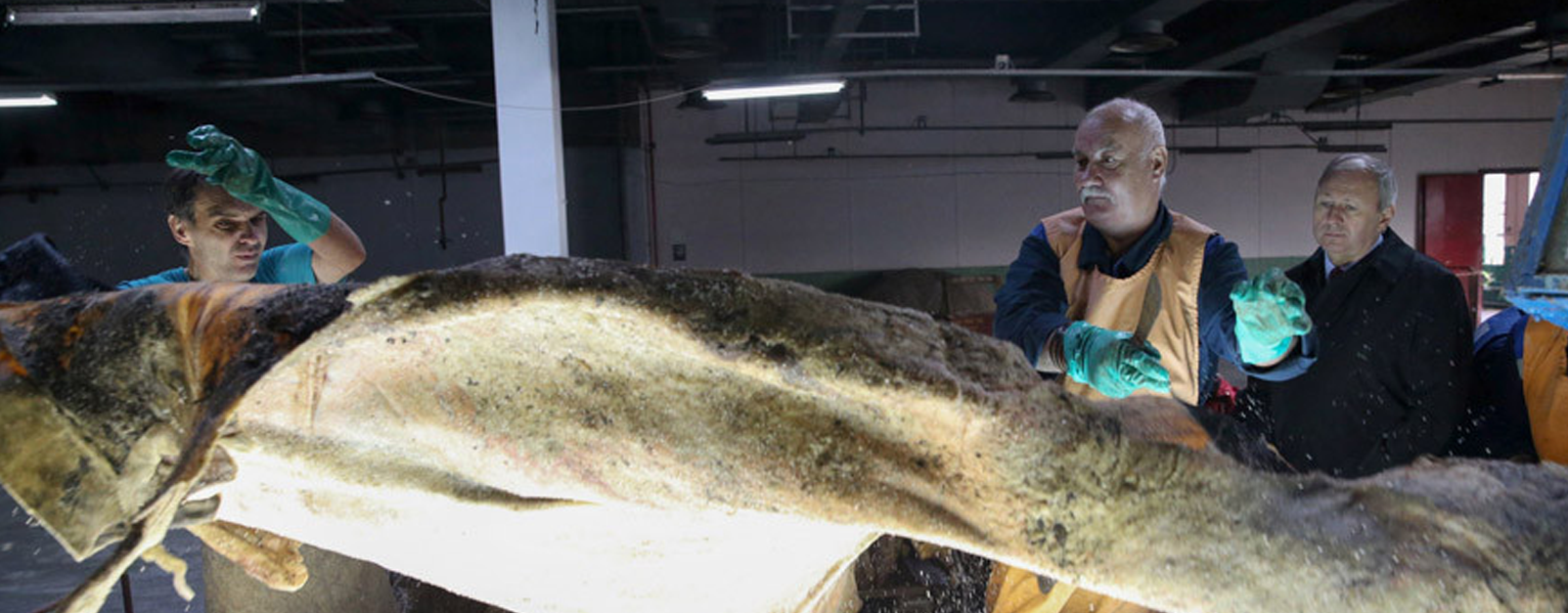
History of the enterprise

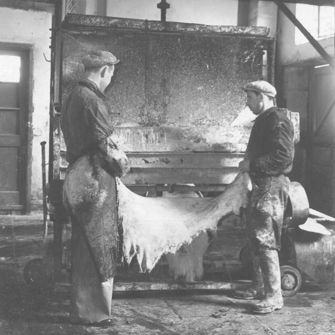
On the outskirts of Minsk, on Lyakhovka Street (now Oktyabrskaya), there were five small leather workshops that belonged to Rubin, Salman, Goltberg, Den and Improt.
Small semi-handicraft workshops could not be called factories - this was the legacy of old manufacturers, without any mechanization, ventilation, electric lighting, a sedimentary well was built in the yard to drain wastewater.
On the basis of the workshops, four state enterprises and one professional technical school of tanners were created.
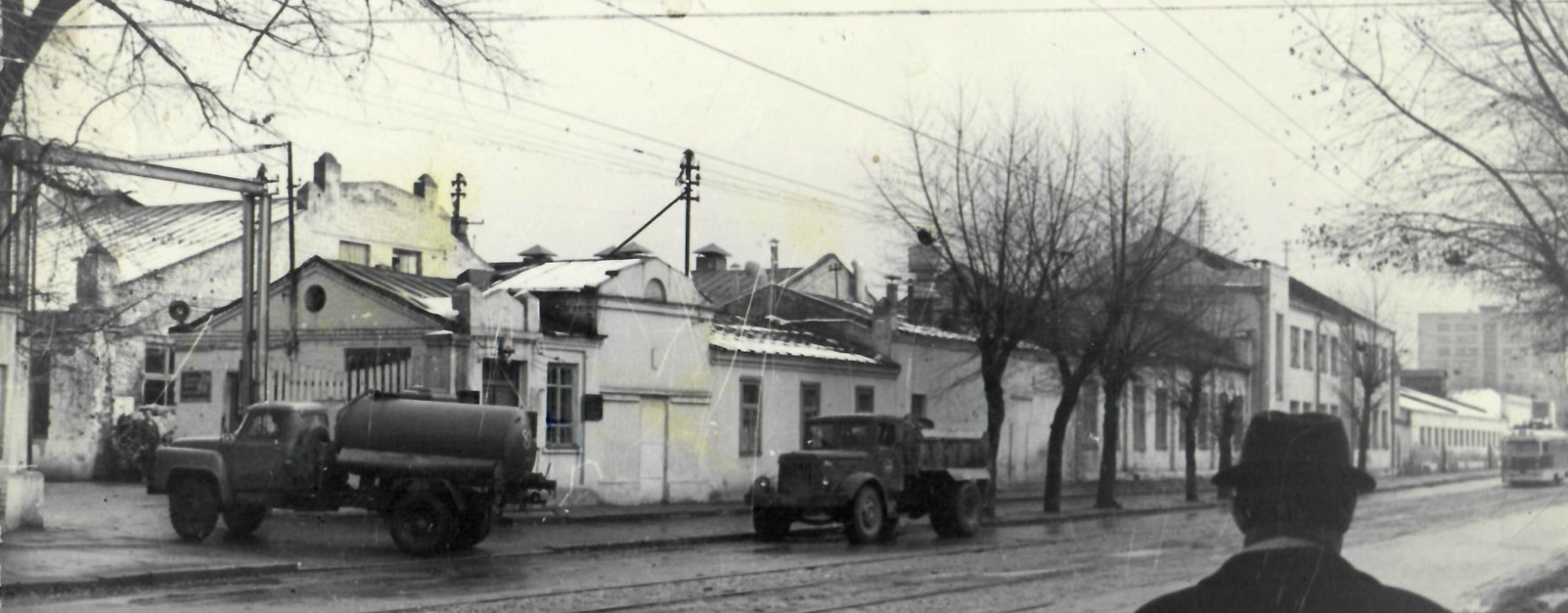
The construction of the 2nd chrome production, a turbine hall and a base for leather raw materials was completed. All production facilities were combined into one plant, which was named "Bolshevik".
From this moment, the official countdown of the history of the Minsk Leather Production Association begins.
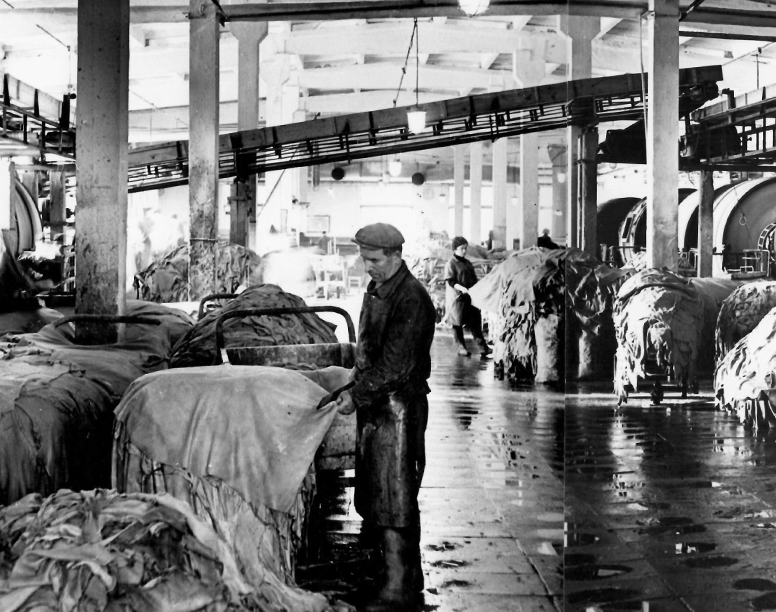
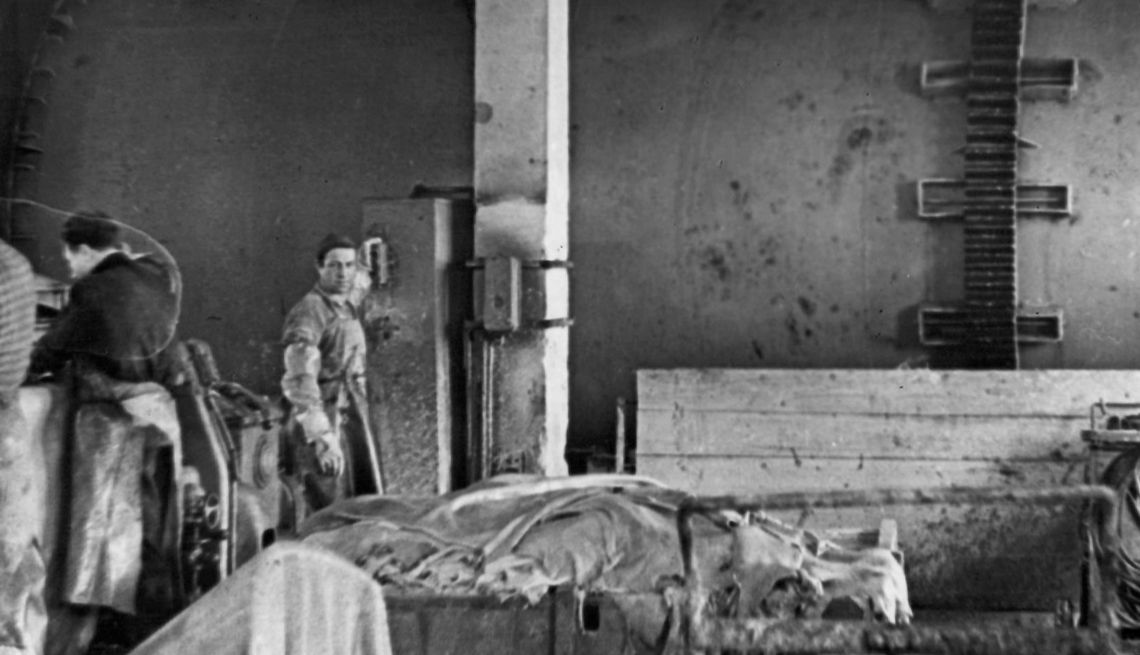
A glue shop was built, the “WOLFA” locomobile was launched, which supplied the plant with steam and electric energy, and the first hydraulic press appeared.
For the first time, the factory began to produce colored leather goods. A planning department, a labor and wages department were created, 3 engineers and 2 technicians appeared.
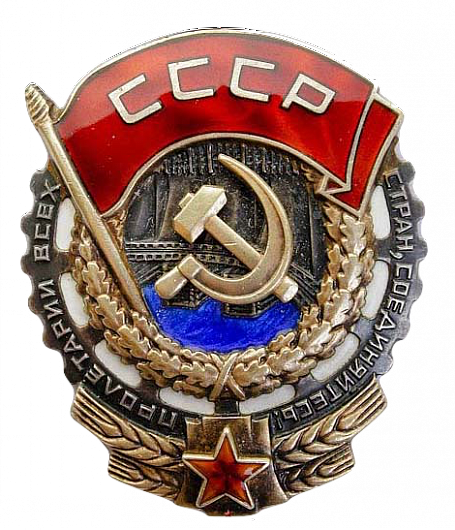


After the liberation of Minsk from the Nazi invaders, personnel returned to the plant to carry out restoration work.
The Minsk leather factory "Bolshevik" started working again at full capacity from 4 August.
The Bolshevik leather factory consisted of 2 chrome production facilities, a glue shop, a patent leather workshop, a split leather processing workshop, a consumer goods workshop and a wool and bristle processing workshop.
Wastewater treatment plants were built. Technological equipment was introduced: 4 machines for cutting peripheral skin areas, roller adjustable presses with hot rolls, vertically closed dryers with sliding frames were manufactured and introduced.
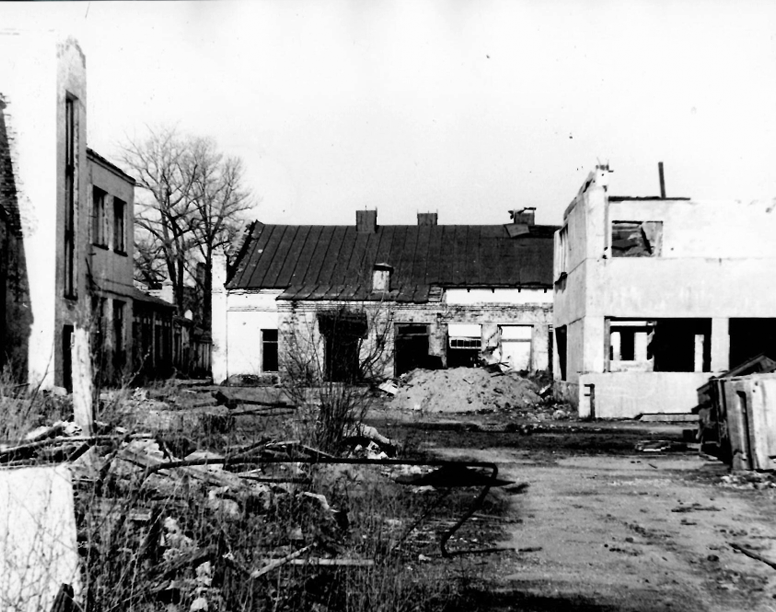
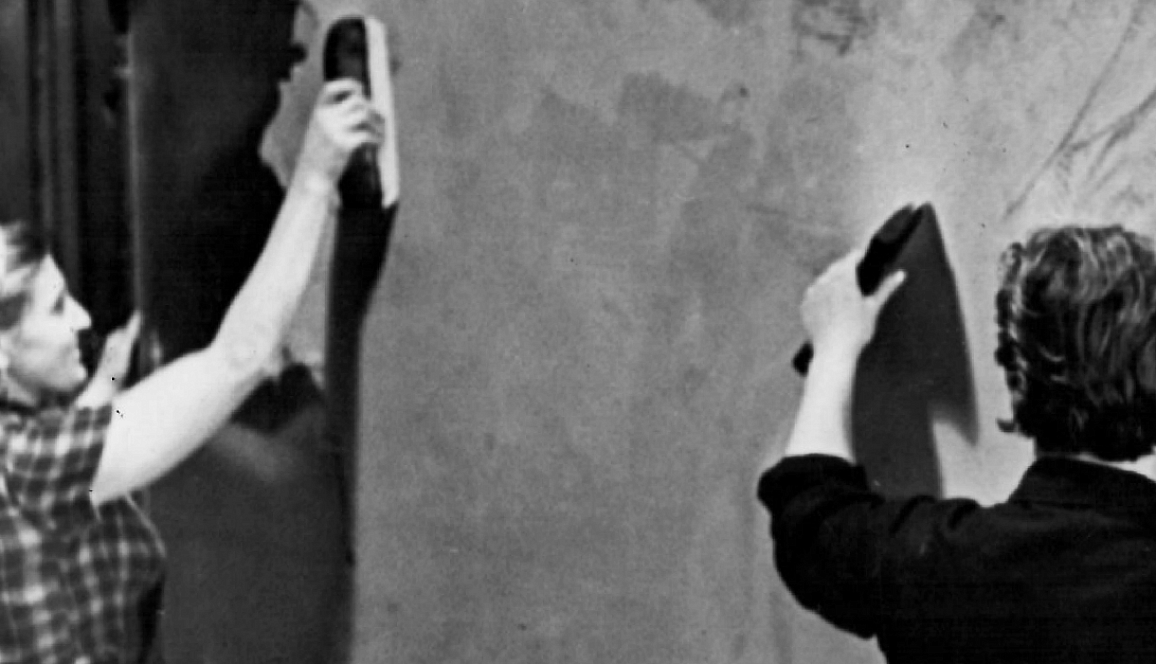
The Minsk leather production association "Bolshevik" became a member of the Chamber of Commerce and Industry of the Belarusian USSR, the organization is still a member of the Belarusian Chamber of Commerce and Industry.

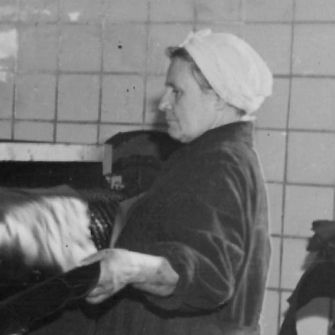
As part of the Minsk production tanning association "Bolshevik" (MLPA "Bolshevik"), there were: the parent enterprise (Otyabrskaya street, 19, Minsk), the Smilovichi tannery (the town of Smilovichi, Chervensky district, Minsk region) and the Minsk plant for primary processing leather raw materials (village Gatovo, Minsk region).
A decision was made to build a tannery near the village of Gatovo near Minsk, with the subsequent removal of the Bolshevik Minsk production tannery to a new industrial site.
A contract has been signed with the Italian firm "CONCERIE COGOLO S.p.a." for the construction and turnkey commissioning of a plant with a capacity of 500 million sq. leather from raw materials of cattle and 200 million sq. skins made of split leather. The project provided for the use of advanced production technology, high-performance equipment, a clear, modern organization of production, as well as the creation of favorable working conditions.
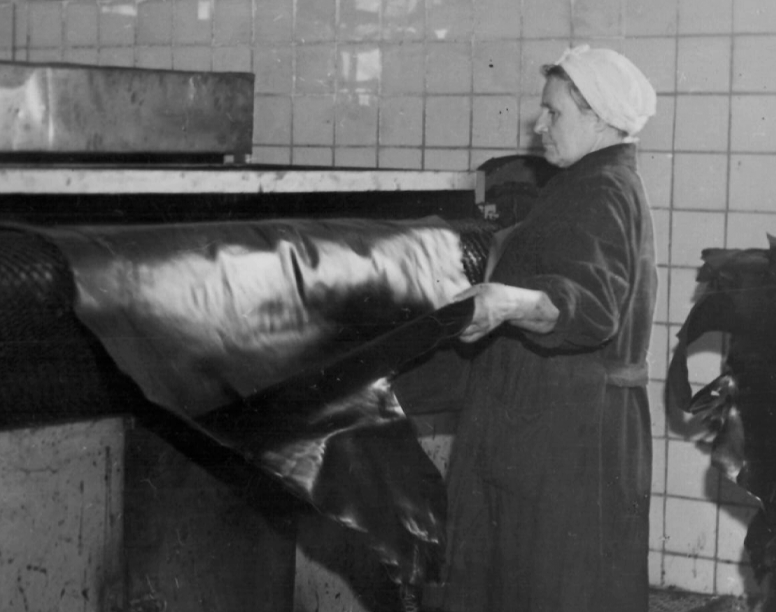
On October 31, an act of the working commission on acceptance of the plant under construction into commissioning was signed, work began on the development of capacities and the formation of a team of workers.
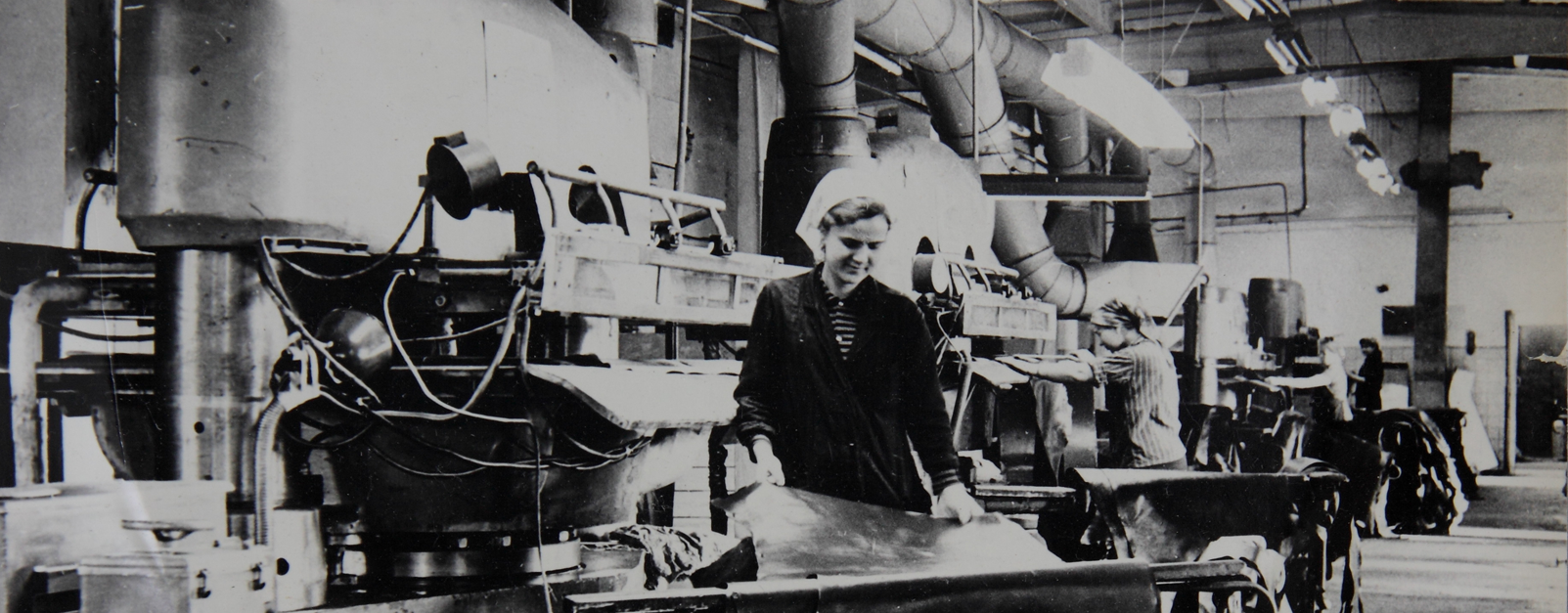
MLPA "Bolshevik" was reorganized into the Lease Enterprise "Minsk Industrial Leather Association"..
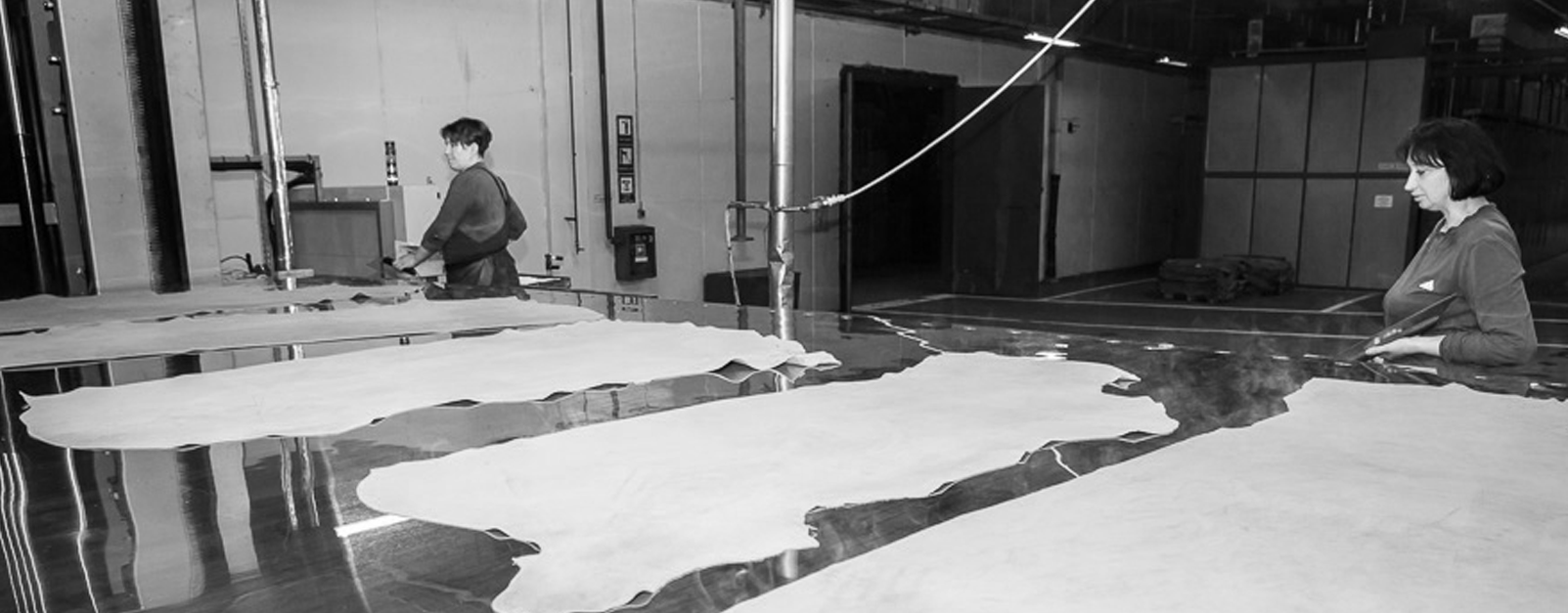

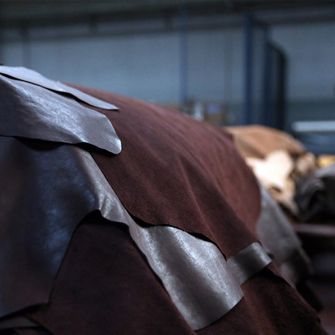
To attract foreign investment, joint ventures have been created on production sites and with a controlling stake: the Belarusian-Italian enterprise Amiko, the Belarusian-Italian-Croatian Bel-Skin, the Belarusian-Cypriot Gatovo-Tennery and the Belarusian-Czech Smilovichi Tannery factory".
The formation as a result of the restructuring of these enterprises made it possible to preserve the tannery in difficult times, and to increase production volumes.
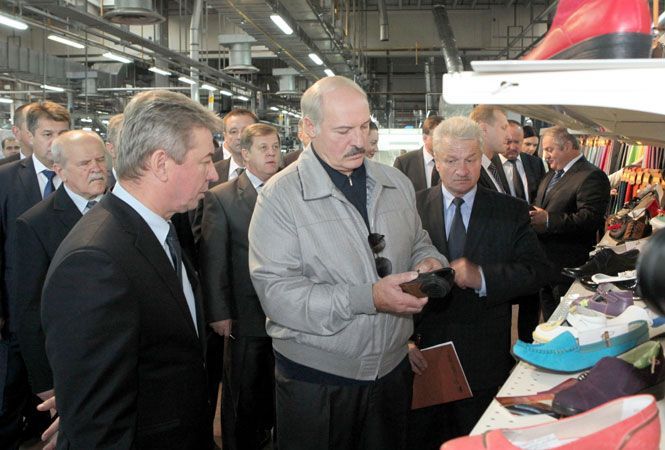
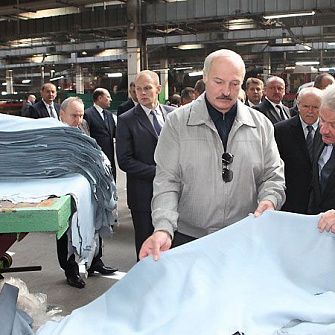
This year was especially marked in the history of the organization by the visit of the President of the Republic of Belarus Alexander Lukashenko, who a year earlier signed a decree on state support for the modernization of production at the Minsk Leather Production Association.
Based on the results of this working trip, the Head of State clearly defined the priorities: all leather raw materials produced in the country should be processed at Belarusian enterprises.
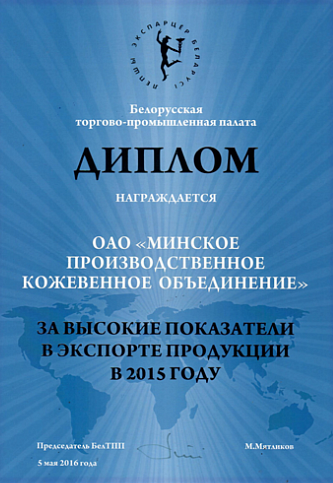

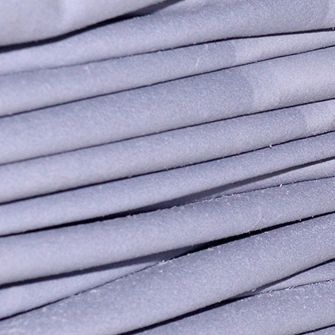
In December, a four-year large-scale modernization of production was successfully completed, which was launched by the Order of the President of the Republic of Belarus with the provision of state support. A whole range of diverse complex technical measures has been implemented.
A new boiler house and steam generator unit was commissioned to produce a ton of steam per hour. Reconstruction of ash and tanning drums and a dyeing gallery was carried out. The processing of flesh waste has been established at a tricanter plant, the schemes for processing raw hides have been rationalized, more advanced formulations of solutions have been developed, new chemical materials, modern types of finishes have been introduced, which make it possible to produce products with improved consumer characteristics in accordance with international requirements.
The potential of the organization has significantly increased - there is an opportunity to increase the output of finished leather products. Our own developments turned out to be very successful, which allowed the team to reach a qualitatively new level of production from low-grade hides.
The Prime Minister of the Republic of Belarus Sergei Rumas visited the production shops and got acquainted with the equipment, the technological process of leather production and the range of products.
